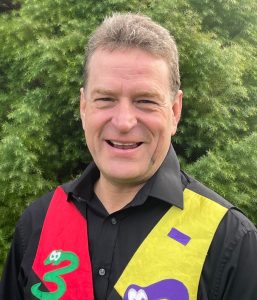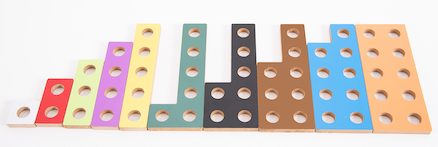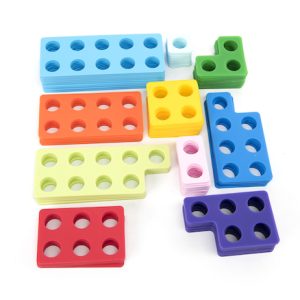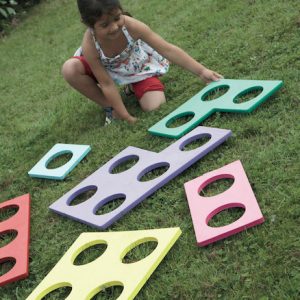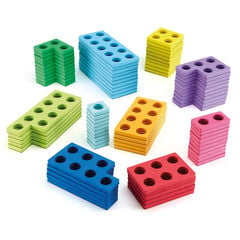Hi, my name is Dave Godfrey. I’m a teacher and an independent primary mathematics consultant from York, and I’m passionate about the use of concrete resources.
The focus of this blog and its accompanying video is on the use of Number Frames.
Number Frames: Pair Wise & Five Wise Shapes
There are two different types of Number Frames available that mirror two different arrangements of objects.
These ones can be referred to as Five Wise.
Five wise shapes mirror the standard arrangements of objects in a 10s frame. So, 7 is seen as 5 and 2 more, 3 less than 10. 6 is seen as 5 and 1 more, 4 less than 10.
This type (below) is referred to as Pair Wise.
Pair wise shapes grow in 2s or in pairs. So, 7 is seen as 3 twos plus one, 6 is seen as 3 twos.
What number frame sets can I buy?
Number Frame sets are made from a variety of materials. The pair-wise shapes used in this video are made from foam, silicone and plastic. The five-wise shapes, unique to TTS, are made from a sustainable wood source. They come in a wooden box, and those of you who have experienced the joy of opening an Apple product, will find the same joy when you open the lovely wooden box that contain the five-wise shapes!
Pair Wise & Five Wise Shapes – flexible resources
In the video I’ve spent some time comparing the two sets of shapes and identifying some of their unique and common properties. Here are a few examples:
Both sets of shapes can be used successfully for:
- Number Bonds
- Subtraction by Comparison (they do not work for subtraction by reduction!)
- Representing a Number (although the image is slightly different)
- Modelling Addition
- Problem Solving Challenges (A picture frame problem using five-wise shapes is modelled in the video)
- Division by Grouping (Partitive Division) e.g., 19 ÷ 4 = 4r3
- Fractions (e.g., filling the holes using two colours of stacking counters to show 4/7ths add 3/7ths = 1)
Pair Wise Shapes are ideal for:
- Odd and Even Numbers
- Factors of a Number
Five Wise Shapes are ideal for:
- Linking with 10s Frames
- Entry level Bar Modelling (using the 1 to 5 pieces)
- Square Numbers (1 × 1 through to 5 × 5)
Your use of Number Frames in school
Number Frames, which are sometimes referred to as Number Shapes, that are set up as pair-wise shapes have been widely used in UK schools for many years. I’d encourage you to check out at the five-wise shapes as these are equally powerful tool. Both sets of shapes support the CPA (Concrete, Pictorial and Abstract) approach within the teaching of mathematical mastery. Check out the range of Number Frames here including the TTS Number Frames Bundle Deal.
How effective are you finding the use of number frames in your school?
Please do share how you’re creatively using the shapes with your children – I’d love to know!
With many thanks to Dave Godfrey for writing this blog for us.
Dave is an experienced primary teacher, mathematics consultant and trainer from York. He is also an author, songwriter and NCETM Professional Development Lead for the National Curriculum. Dave is passionate about equipping teachers to teach mathematics with deep understanding, clarity, enjoyment and creativity.
He is best known as the creator of the Number Fun. The Number Fun Portal gives access to over 350 videos that feature a unique combination of visualisation, animation, story, song and humour. (numberfunportal.com). Many of these videos, with their accompanying creative resources, include the representation of the concrete resources explored in these videos.
He travels widely across England to train and equip teachers, and to present his fun-filled and equipping Number Fun Days. Dave has many years’ experience of training teachers in the use of the CPA (Concrete, Pictorial and Abstract approach) and he would be delighted to support you and your colleagues in developing their use within school.
- numberfun.com
- youtube/c/numberfun
- dave@numberfun.com
- @NumberFunDave
